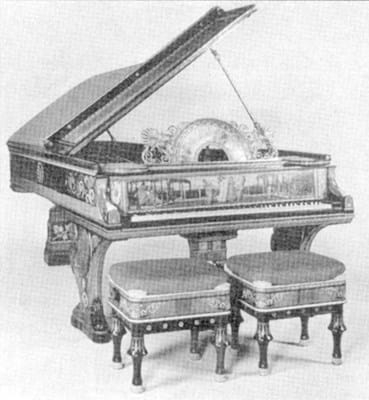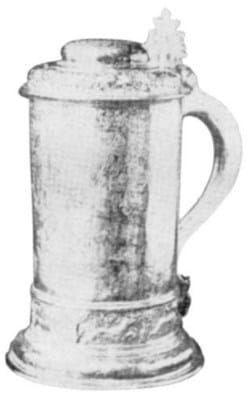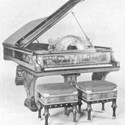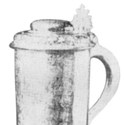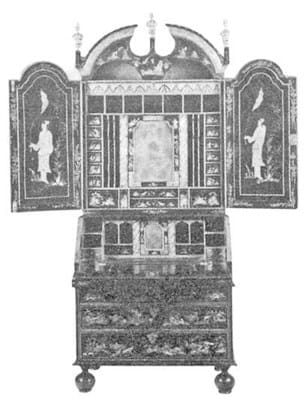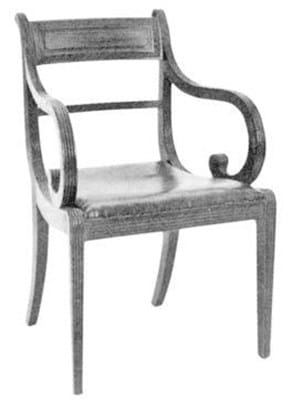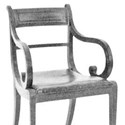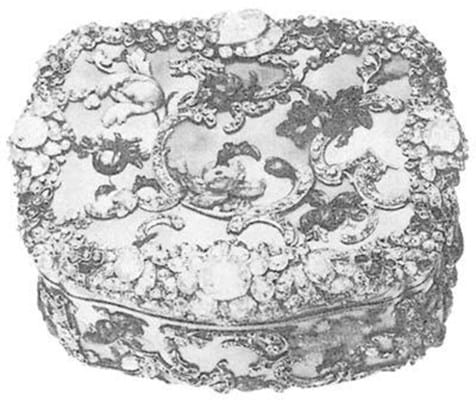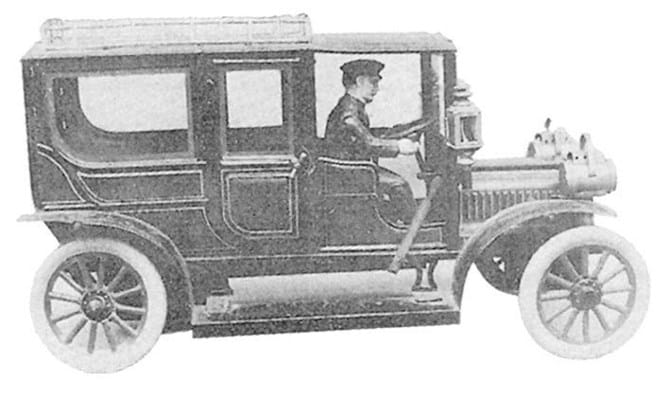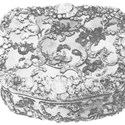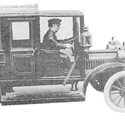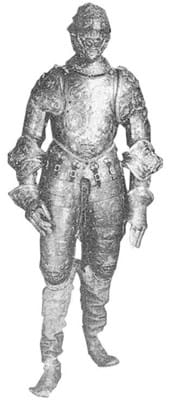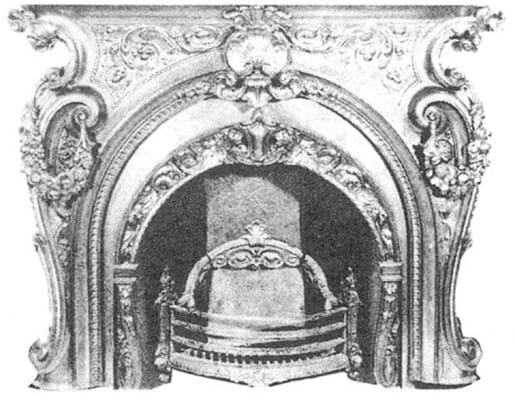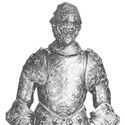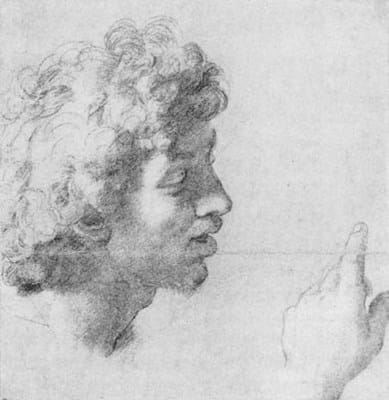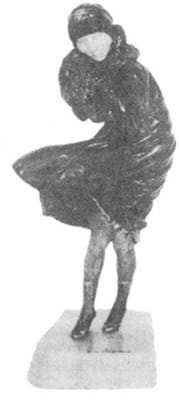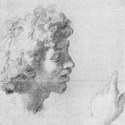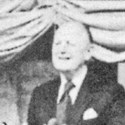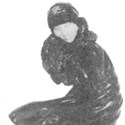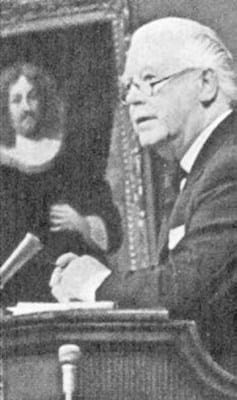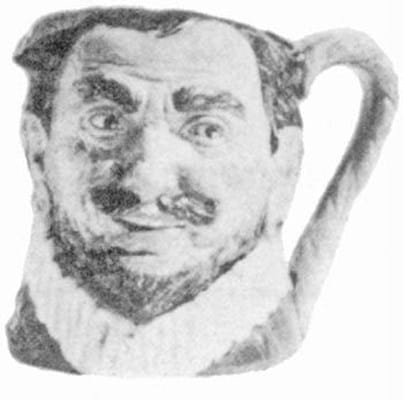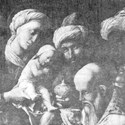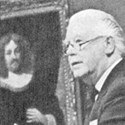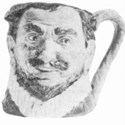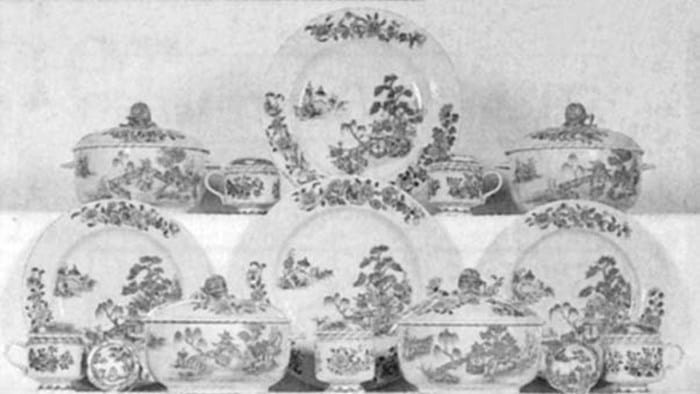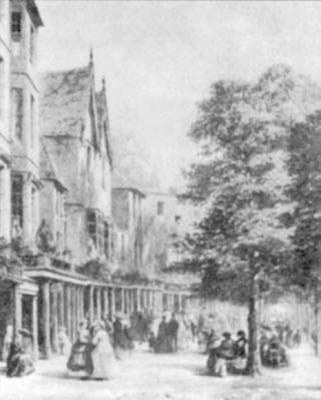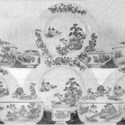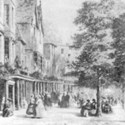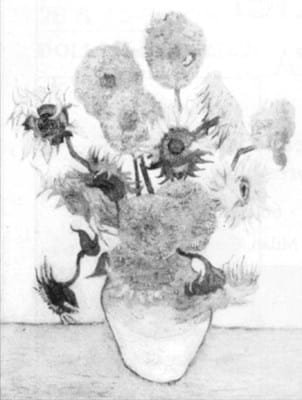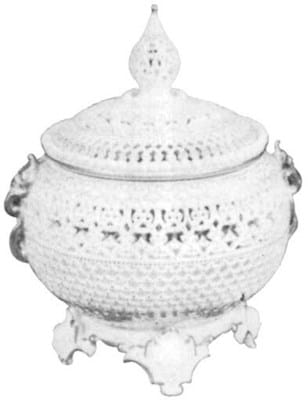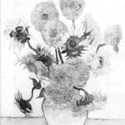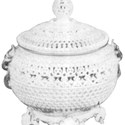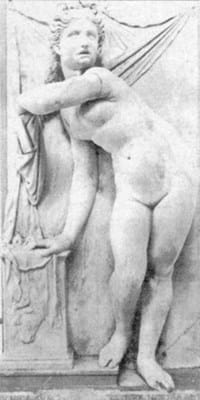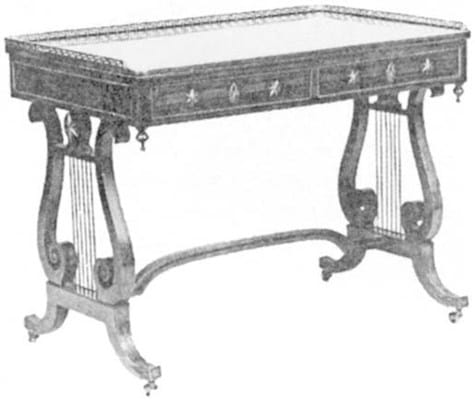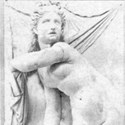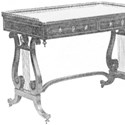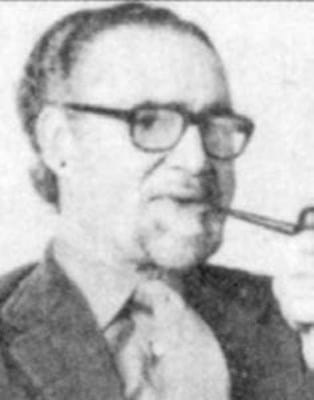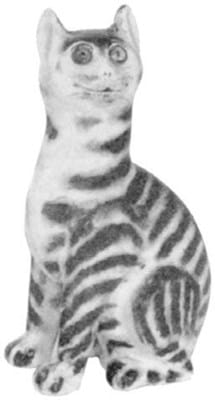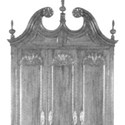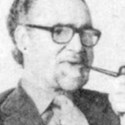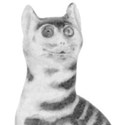1980
■ A massive rise in the price of silver causes a stampede to melt down mediocre antique silver for bullion. The scrap price approaches £14 per ounce but drops back to around £4 when Bunker and Herbert Hunt fail to corner the market.
■ A 17th century Flemish oak cabinet sold by Girton College, Cambridge, achieves a record price for a piece of oak furniture of £33,000 at Boardman’s of Suffolk.
■ Fake Old Master drawings sold by Eric Hebborn surface in the market.
■ The National Heritage Memorial Fund replaces the National Land Fund to help museums and other non-profit bodies with grants of up to 100% to acquire and preserve outstanding property.
■ Paris auction houses move back into their refurbished salerooms in Rue Drouot from temporary accommodation at the old Gare d’Orsay, which was destined to become the Musée d’Orsay.
■ An Attic amphora painted by Psiax, from the Castle Ashby collection of Greek vases, sells for £160,000 at Christie’s.
■ Sotheby Beresford Adam’s new Chester saleroom opens.
■ Sotheby’s American turnover is up 65% to $248m (£110m) and Christie’s by 100% to $113m (£50m), but owing to recession, UK salerooms barely keep pace with inflation.
■ The Royal Academy’s Burlington House Fair replaces the Grosvenor House Fair, cancelled in 1979 because of industrial action.
■ A Bernini bust of Pope Gregory XV, bought unrecognised at Christie’s Swithland Hall auction, is sold at Sotheby’s for £120,000.
Meanwhile elsewhere:
● The SAS storms Iranian embassy in London.
● Fire ravages Alexandra Palace.
● John Lennon shot dead in New York.
1981
■ Sotheby’s and Christie’s US turnover outstrips their UK operations.
■ A netsuke of a horse by Kaigyokusai Masatsugu, which made a world record £165 in London in 1962, makes another world record of $78,000 (£32,385) at Sotheby’s Honolulu.
■ Agnews is acquitted of contravening the Bidding Agreements Act in buying the Algardi bust with Thaw and Artemis at Christie’s.
■ The Holy Family by Poussin is sold for £1.65m at Christie’s to raise funds to preserve Chatsworth and its collections.
■ Top lot in Sotheby’s Hong Kong sale of the Chow Collection Part III is a Chenghua doucai chicken cup at HK$3.8m (£340,000).
■ Britain’s first contemporary art fair is held in Bath.
■ Sotheby’s inaugurates Conduit Street sales – fast turn-around auctions which concentrate on property worth £200 or less.
■ Nine dealers are fined in the first successful prosecution of members of a ring.
■ Derek Johns, former head of Sotheby’s Old Master department, and Philip Harari, former managing director of Colnaghi’s, set up as Harari and Johns in Bond Street.
■ At the eleventh hour, the BADA and the SLAD withdraw their legal action against Sotheby’s and Christie’s over the buyer’s premium. The dealers maintained that the auctioneers had colluded in introducing the premium at the same time. The auction houses promise to review the rate of buyer’s premium.
■ The French Trade breathes a sigh of relief when art is exempted from a proposed wealth tax by Mitterrand’s new Socialist government.
■ As the year ends, Sotheby’s announces it will not be reducing its buyer’s premium and actually raises vendor’s commission.
Meanwhile elsewhere:
● Prince Charles marries Lady Diana Spencer.
● Riots in Brixton and Toxteth spark civil unrest across British cities.
1982
■ Sotheby’s share price yo-yos up and down all year amid talk of a takeover bid. Californian financier David Murdoch, Warner Communications and S Pearson are all fielded as possible buyers. Sotheby’s cold-shoulders the approaches of Stephen Swid and Marshall Cogan of General Felt Industries.
■ Christie’s reduces its King Street buyer’s premium to 8%; Christie’s South Kensington charges no buyer’s premium.
■ Sotheby’s Belgravia closes and sales move to Bond Street.
■ A world record price for Japanese cloisonné is set at Sotheby’s when £19,500 is paid for an Ando vase, c.1900, decorated with persimmon.
■ Paul Getty’s estate is settled, with the Getty Museum receiving $1.3bn (£870m). News that it is obliged to spend 85% of its income in the first five years to preserve charitable status spreads joy in the Trade and consternation among heritage bodies. The first major purchase is a Dosso Dossi from the Marquess of Northampton for £1.8m.
■ Sotheby’s closes its salerooms in Madison Avenue and Los Angeles following staff cuts as the market continues to falter.
■ Walter Crane’s The Laidley Worm of Spondleton Hough makes a world record for the artist of £55,000 at Sotheby’s.
■ The British Museum buys the Mostyn Tompion by private treaty for £550,000. The unique year-going timepiece was made for William III and bequeathed by him to Lord Mostyn, in whose family it descended.
■ Roy Miles closes his Duke Street gallery because of rising costs.
Meanwhile elsewhere:
● A British taskforce retakes the Falkland Islands after Argentina invades.
● Henry VIII’s flagship Mary Rose is raised from the seabed.
1983
■ Sotheby’s continues to resist the approaches of Swid and Cogan. Their long-awaited take-over bid begins in April.
■ Richard Dadd’s Contradiction: Oberon and Titania makes £500,000 at Sotheby’s.
■ Ex-Sotheby’s experts Lord John Kerr, David Stagg and Frank Herrman set up Bloomsbury Books Auctions.
■ Degas’ pastel L’Attente makes $3.4m (£2m) at Sotheby’s New York in a $34m (£21m) Impressionist sale.
■ White knight Alfred Taubman rides to the rescue of Sotheby’s, finally acquiring the company for 700p a share in October. Sotheby’s Board declares itself happy with the ‘chemistry’ between Sotheby’s and the new owner and his intention to keep the core business in London.
■ The Grosvenor House Fair is revived after a gap of four years.
■ Brian and Anna Haughton move their ceramics gallery to Burlington Gardens.
■ Lord Gowrie becomes an unusually powerful minister for the arts, directly responsible to the prime minister, Margaret Thatcher.
■ Christie’s, with Hamilton & Hamilton, holds the biggest ever Irish house sale at Luttrellstown Castle, Co Dublin, which realises IR£2.5m.
■ An upswing in the market, particularly in New York, gives Christie’s a £128.2m autumn turnover (up 50%) and Sotheby’s £141m (up 74%).
Meanwhile elsewhere:
● Experts are hoaxed by fake Hitler diaries published in the Sunday Times. ● US cruise missiles in the UK lead to mass protest by women at Greenham Common.
● £26m stolen in Brink’s-Matt robbery.
1984
■ Tom Keating, the forger, dies.
■ Christie’s New York sells the legendary jewellery collection of Florence Gould for $8.1m (£5.6m).
■ Christie’s auctions the residual contents of Belton.
■ The contents of Lord Iveagh’s Elveden Hall, Suffolk, are sold for £6m – nearly four times estimate – in Christie’s four-day sale on the premises.
■ Old Master drawings from Chatsworth fetch £19.6m at Christie’s, after British museums tragically bungle the chance to buy them. In the same week, Lord Clark’s Turner View of Folkestone fetches £6.7m at Sotheby’s, becoming the world’s most expensive British painting.
■ Peter Nahum leaves Sotheby’s to become a dealer, setting up business in Ryder Street.
■ 24 UK dealers report a turnover of more than £1m at Companies House. Heading the list are Koopman (£10.4m), SJ Phillips (£8.1m), Agnew’s (£8.1m), Richard Green (£6.9m), Mallett (£4.7m) and Partridge (£4.5m).
■ Agnew’s charity exhibition of 35 paintings from the British Rail Pension Fund collection, is the first public show of its picture holdings.
Meanwhile elsewhere:
● Policewoman Yvonne Fletcher is shot outside the Libyan Embassy in London.
● Miners’ strike sees confrontations between police and strikers across the UK.
● The UK signs an agreement to return Hong Kong to China in 1997.
1985
■ Peter Chance, Christie’s most influential post-War chairman, dies aged 74.
■ Christie’s South Kensington introduces paddle bidding to facilitate computerisation of sales.
■ Furniture expert Arthur Negus, doyen of Antiques Roadshow, dies aged 82.
■ The £25m gift from the Sainsbury family to build a National Gallery extension is topped by J. Paul Getty’s £50m National Gallery endowment.
■ The first Original London Print Fair is held at the Royal Academy.
■ David Bathurst, chairman of Christie’s London, is forced to resign when it transpires that in 1981, during his time as president of Christie’s New York, three bought-in Impressionist paintings were falsely reported as sold.
■ The leading Parisian furniture and picture dealer Didier Aaron opens a gallery in London.
■ Sotheby’s sells the contents of Littlecote House, Wiltshire, for £3.5m. The outstanding collection of arms and armour is bought by private treaty sale by the Tower of London for £580,000.
■ Christie’s inaugurates its Monaco saleroom with the Fr41m (£4.1m) Clore collection of French furniture and porcelain.
■ 300 Old Master prints from Chatsworth total £3.3m at Christie’s, with Rembrandt’s Ecce Homo making £520,000, a world auction record for a print.
Meanwhile elsewhere:
● The year-long miners’ strike ends in March. ● Marc Chagall dies.
1986
■ Peter Ashley Russell is jailed for faking 17th century gold cutlery, including a fork and spoon sold for £48,000 at Christie’s.
■ Bernard Quaritch sells the financier Carl Pforzheimer’s collection of early English books and manuscripts to the University of Texas for about $15m, the largest transaction in the history of book dealing.
■ Michael Davis Shipping goes into receivership.
■ Lord Wimborne’s right to sell Goya’s portrait of The Marquesa de Santa Cruz at Christie’s is challenged by the Spanish government. A private treaty sale of the work for £4m to Spain averts a lawsuit.
■ Stubbs’ Young Starling, bought for £520 in a Worthing auction, sells for $380,000 (£253,000) at Sotheby’s New York.
■ The Fine Art Society pays £36,000 at Phillips for a Christopher Dresser silver-plated geometric teapot.
■ Christie’s South Kensington charges a buyer’s premium for first time.
■ Import/export licences are once more required for movement of antique ivory, owing to a tightening of EEC rules.
■ Christopher Graf Douglas becomes head of Sotheby’s Germany, replacing Ernst Behrens, who has retired to enter a monastery.
■ A surge of interest in 19th century Scandinavian painting, reflected in the National Gallery’s Danish exhibition, results in SKr2.3m (£230,000) for Peder Severin Kroyer’s moonlit beach scene at Bukowskis, Stockholm.
■ Sotheby’s autumn turnover rises by a record 77% to £331m.
Meanwhile elsewhere:
● Chernobyl disaster. ● The Single European Act is signed. ● M25 officially opens.
1987
■ Exceptionally heavy snowfalls play havoc with provincial auctions.
■ Paul Whitfield and Christopher Elwes join Bonhams from Christie’s to ‘relaunch’ the Knightsbridge auction house.
■ Diana D Brooks is appointed president of Sotheby’s North America.
■ Mallett’s goes public, with shares opening at a premium.
■ Dr Geza von Habsburg and David Feldman set up a new Geneva auction house, Habsburg Feldman, aiming ‘to take the market by storm’ with a business that combines a dynamic modern approach with the discreet, personal service of private Swiss banks.
■ May: Christie’s sale of the contents of Great Tew, Oxfordshire, is dominated by the furniture of George Bullock and GJ Morant.
■ The George Renand collection of Modern art achieves Fr181m (£18m) at a celebrity-packed Paris auction. Top lot is La Belle Romaine at Fr41m (£4m), a world record price for Modigliani.
■ Sotheby’s, Christie’s and Phillips’ combined turnover totals £1.5 billion, up 44% on 1986.
■ British exports of art and antiques top £1bn for the first time.
Meanwhile elsewhere:
● Ikea opens its first store in the UK.
● An October hurricane lays waste to a large part of southern England. ● The FTSE 100 Index falls by 23% in two days as the Black Monday stock market crash leads to worldwide losses estimated at £1 trillion.
1988
■ Former foreign secretary Lord Carrington becomes chairman of Christie’s.
■ The High Court orders the return to India of an 11th century bronze Shiva Nataraja which had been stolen from the grounds of a ruined temple, smuggled out of India and bought by a Canadian company in London.
■ Sotheby’s floats on the stock market, offering a limited number of non-voting shares.
■ A judge stops the sale of a Maori head in an ethnographic sale at Bonhams, after protests from Maori groups. The head is returned to New Zealand for burial.
■ Sotheby’s holds the first, hugely successful auction of Modern and Contemporary Russian paintings in Moscow. Sensation of the sale is Grisha Bruskin’s Fundamental Lexicon, which makes £242,000.
■ Robert Maxwell buys Evan Steadman Communications Group, organiser of the Grosvenor House Fair.
■ Sotheby’s sale of the Elton John Collection totals £4.3m. The V&A is much criticised for hosting a preview of the sale.
■ The management buy-out of century-old Oriental dealer Bluett and Sons is backed by substantial capital from Chelsfield plc and JO Hambro Magan.
■ The first Twentieth Century British Art Fair sees strong buying by the Japanese. Jonathan Clark sells an SJ Peploe for a record £250,000 to an overseas buyer.
■ The Impressionist market spirals ever higher, with Picasso’s Rose Period Acrobate et Jeune Arlequin, 1905, fetching £19m at Christie’s.
Meanwhile elsewhere:
● The £1 note ceases to be legal tender.
● Radiocarbon dating of the Turin Shroud suggests a date of between 1260 and 1390.
● 259 die in Lockerbie disaster as Pam Am Flight 103 is blown up over Scotland.
1989
■ The Prudential’s network of provincial salerooms is sold to Phillips, which now has 25 branches.
■ Scotland Yard’s Art & Antiques Squad is revived.
■ Jean Fabris, heir of Utrillo’s widow, tries to disrupt the Utrillo sales at Sotheby’s and Christie’s, claiming the works are fakes.
■ Sotheby’s New York evening Impressionist sale totals $186m (£113.6m). Picasso’s 1901 self-portrait Yo Picasso sells for $43.5m (£26.5m) and Baron Thyssen pays $22m (£13.4m) for Gauguin’s Mata Mua.
■ The Getty Museum pays $35m (£22m) for Pontormo’s portrait of Cosimo I de Medici at Christie’s New York, prompting speculation that Old Masters are catching up with Impressionist prices.
■ A mahogany and ormolu commode attributed to John Channon sells for £1m, five times estimate, at Christie’s.
■ Alex Wengraf pays £650,000 at Christie’s Wrotham Park for a statue estimated at £3000-4000 but spotted as Giambologna’s Fata Morgana.
■ Brian and Anna Haughton hold a new, fully vetted fair at the Park Avenue Armory, New York.
■ The Burlington Fair is cancelled after top dealers pull out and it merges with Grosvenor House.
■ Scandal erupts when Geraldine Norman reveals in an Independent article that Alan Bond’s $49m (£28m) purchase of van Gogh’s Irises in 1987 was effected with a 50% loan from Sotheby’s.
Meanwhile elsewhere:
● Tim Berners-Lee writes a proposal document for the World Wide Web.
● The Louvre Pyramid opens.
● The Berlin Wall comes down.

